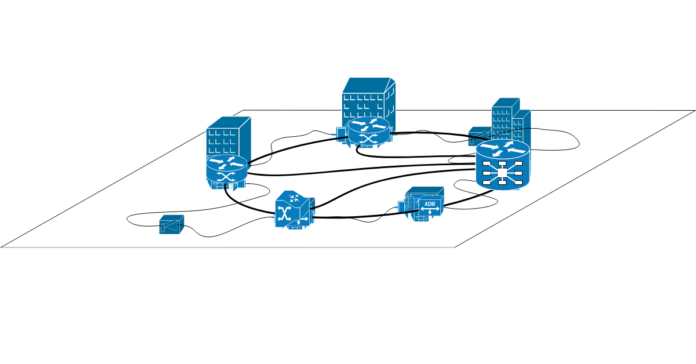In today’s interconnected world, the term “network” is often mentioned, but its meaning can vary depending on the context. Whether you’re discussing computer systems, telecommunications, or even social interactions, understanding what a network is can be crucial. This blog post will delve into the different definitions of a network, its applications in computers, the concept of networking, and various types of networks with examples. Let’s explore these concepts in detail.
What is the Definition of a Network?
A network, in its broadest sense, is a collection of interconnected entities or nodes that can communicate with each other to share resources, information, or services. These entities can be computers, devices, people, or even organizations, depending on the context. The primary purpose of a network is to facilitate efficient communication and resource sharing among its members.
What is a Network in Answer?
In simple terms, a network is a system that connects multiple entities, allowing them to communicate and share resources. For example, in the context of computer networks, it involves connecting computers and other devices using wired or wireless connections to enable data exchange. In social networks, it refers to the connections between individuals or groups that allow for interaction and information sharing.
What is a Network in Computer Simple?
A computer network is a set of computers and other devices connected to facilitate communication and resource sharing. These devices can include desktops, laptops, servers, printers, and smartphones. The connections can be made using physical cables, such as Ethernet, or wirelessly through technologies like Wi-Fi and Bluetooth. The primary goal of a computer network is to enable devices to share data, access the internet, use shared applications, and utilize common resources like printers and storage devices.
What is Networking and an Example?
Networking specifies the practice of connecting computers and other devices to share resources and information. It involves the design, implementation, and management of networks to ensure efficient communication and resource sharing. Networking can be applied in various contexts, including computer networks, telecommunications, and social interactions.
Example of Networking in Computer Networks:
Imagine an office environment where multiple employees need to access a central database, share files, and use a common printer. By setting up a local area network (LAN), all computers in the office can connect to a central server that hosts the database and shared files. Employees can access the database, share documents, and print materials without needing individual physical connections to the printer or separate copies of the database. This setup streamlines operations and enhances productivity.
Types of Networks and Examples
Networks can be restricted into different types based on their size, scope, and purpose. Here are some common types of networks, along with examples:
Local Area Network (LAN): A LAN is a network that connects devices within a limited geographical area, such as a home, office, or building. It is typically used to share resources like files, printers, and internet connections among connected devices.
Example: An office network where computers, printers, and servers are connected to share resources and communicate with each other.
Wide Area Network (WAN): A WAN spans a large geographical area, often connecting multiple LANs. It is used to connect devices and networks across cities, countries, or even continents.
Example: The internet is the largest WAN, connecting millions of computers and devices worldwide.
Metropolitan Area Network (MAN): A MAN covers a larger area than a LAN but is smaller than a WAN, typically spanning a city or a large campus. It is used to connect multiple LANs within a metropolitan area.
Example: A city’s public Wi-Fi network that provides internet access to various locations in the town.
Personal Area Network (PAN): A Personal Area Network is a small network that connects devices within an individual’s personal space, typically within a dimension of a few meters. It is used to connect personal devices such as smartphones, tablets, and laptops.
Example: A Bluetooth connection between a smartphone and a wireless headset.
Virtual Private Network (VPN): A VPN is a secure network that uses encryption to connect remote users or sites over the internet. It allows users to access a private network securely from a remote location.
Example: A remote employee accessing the company’s internal network securely from home using a VPN.
Storage Area Network (SAN): A Storage Area Network is a specialized network that provides access to tight, block-level data storage. It is used to connect servers to storage devices, improving data access and management.
Example: A data center using a SAN to connect multiple servers to a centralized storage system for efficient data management and backup.
The Future of Networking
As technology continues to evolve, so does the concept of networking. One of the most significant advancements in recent years is the development of 5G technology. The future of 5G promises to revolutionize how we connect and communicate by providing faster speeds, lower latency, and more reliable connections. This will enable new applications and services, such as the Internet of Things (IoT), smart cities, and autonomous vehicles, further transforming our interconnected world.
Conclusion
Today, it’s important to know what networks are and the different types. Networks help us communicate, share resources, and get information from all over the world. No matter if we’re talking about a small local area network or something much larger and more complex like the internet – they all have one thing in common: connecting stuff so that they can talk to each other efficiently.
Advancements in networking technologies like 5G will shape the future. This will be a new opportunity that people should adapt to because it comes with its challenges, too and if you do not keep up with them, they might work against you. We have to embrace these changes by knowing more about what is happening every day thus enabling ourselves to take full advantage of the power networks hold in transforming lives besides spurring creativity.


